F4W (Fast4ward) Peak 350W Electric Bike Review
It’s time for the full review of the Hero Eco F4W Peak 350W electric bike with an 8FUN 350 watt geared rear hub motor, a Sony 36 volt 9ah lithium ion battery, and much more!
Make sure you check out the video, large detailed pictures and specifications of the F4W Peak 350W to get familiar with this e-bike.
This full review of the F4W Peak 350W e-bike will give you an idea of the ride characteristics, range test, pros, cons, and overall thoughts on this e-bike.
Please note that there is the F4W Ride 350W that is the same price as the Peak ($1,799) and it provides a step thru frame and more of an urban style.
What you can expect from the F4W Peak 350W E-Bike:
Here is a video with a walk thru of the features of the F4W Peak 350W e-bike:
The F4W Peak has a mountain bike style with a comfortable riding position, a suspension fork and some off road style fenders. The Peak can handle some gravel roads/paths. With some more aggressive tires it could probably handled some mild off road trails.
The Peak comes equipped with a 350 watt geared rear hub motor from 8FUN (Banfang) and it definitely can handle some hills and get you up to the 20 mph cruising speed pretty well. There is some gear noise from the motor which is typical of almost all geared hub motors.
A Sony lithium ion 36V 9ah lithium ion battery provides the juice to help you get over those hills. The battery is located behind the seat tube (good location for weight distribution on the bike) and it is easily removed by unlocking and rotating the battery to the left side of the bike.
Previously, the F4W bikes were offered in a 250 watt versions, but due to popular demand from the US market, Hero Eco revised the F4W bikes to be 350 watts with the Sony 36V 9ah lithium ion battery.
Charging the battery can be accomplished while it is on or off the bike. There is a charging port on the right side of the battery where the included charger connects to. In addition, there is a battery level indicator and on/off switch on the left side of the battery. Charging the battery from empty takes about 4-6 hours.
Adding electric assist is accomplished by using the pedal assist and/or the twist grip throttle.
The pedal assist system on the Peak uses a torque sensor in the cranks to measure your pedaling and provide assist based on which level of assist you select on the display (0 = no assist, 1 = low assist, 2 = medium assist, 3 = high assist). The crank torque sensor is nice but it doesn’t have the same feel as some other torque sensing bikes. This torque sensor in the cranks is similar to a cadence sensor found on other bikes because it feels like the assist is based on how fast you are pedaling, not necessarily how much pedal power you are putting in.
The throttle mode can be used at any time when you are in pedal assist modes 1, 2, or 3. The throttle allows you to manually vary how much assist you use and you can choose to pedal or not! The throttle will not work in pedal assist mode zero.
When switching between pedal assist mode and throttle mode there’s a little delay, so if you want to switch between the modes just beware of that. Switching between modes is easy; use the pedal assist (modes 1, 2, or 3) by pedaling or simply twist the throttle for the free ride.
A LCD display on the left side of the handlebar is where you turn on the bike (along with the battery on/off switch), change the pedal assist mode, select mph or km/h, and get info on the battery level, current speed, trip distance, and overall odometer. The display is very easy to read and use, it provides just enough info.
The traditional bike drivetrain is pretty simple. The Peak comes with an eight speed system that has a Shimano Alivio rear derailleur. The gearing range for this bike is appropriate. There is a low enough gear for the hills and a high enough gear for cruising along at 20 miles per hour.
The Tektro V-brakes do provide a solid amount of stopping power and they have the electronic switches that will stop the electric assist when the brake lever is engaged. That is a nice safety feature.
A Xoom suspension fork helps to take the edge off of rough roads. It can also be locked out to provide a more efficient ride on smoother roads if you prefer.
Kenda Khan tires provide a nice tread profile for road riding with some side knobs for a little off road riding. They are fairly narrow tires (26″ x 1.75″ wide) and the smooth center tread makes them pretty efficient.
The Peak is outfitted with a bunch of accessories! There are the front and rear LED lights (powered by their own batteries), front and rear moto style fenders, a bell, and a kickstand. With that kind of accessory mix, the Peak is ready to roll!
Riding the bike: The F4W Peak is a comfortable riding e-bike with the ability for it to be adjusted to fit almost any personal riding position thanks to the adjustable stem.
The Peak responds quickly in the pedal assist setting and has a fairly intuitive ride feel. As mentioned before, the crank torque sensor seems to operate more like a cadence sensor. It seems to respond more to crank speed (cadence sensor) and less to pedal power (torque sensor).
There is a little flex (intended design) in the cranks when pedaling hard and it seems to be attributed to the torque sensor in the cranks. The flex sensation is a little different when compared to other bikes but it is something that you I got used to after a few miles.
As mentioned before, there is a little delay in switching between the pedal assist mode and the throttle mode. Just something to be aware of.
The riding position of the Peak is comfortable with upright and wide handlebars and a comfortable seat. The suspension forks help with smoothing out the roughness in the road.
The Kenda Khan tires are relatively narrow which makes them efficient on the road but not quite as comfortable (shock absorbing) as wider tires.
The ride test results:
Here is the real world information on how the F4W Peak 350W electric bike performed on my typical riding circuit that includes hills, flats, traffic, wind (when available) etc.
The results below are based on a paved circuit that I use for testing other electric bikes.
While testing these bikes I like to put them through the toughest conditions to see where their bottom line is in regards to range and speed.
Range: As you can see from the GPS info that I recorded, the F4W Peak traveled 20.9 miles and did a total elevation gain/loss of around 1,700 ft. Considering that I weigh 190 lbs and I pedaled very lightly this is pretty good range for a 36 Volt 9 ah battery pack (324 Watt Hours) with a 350 watt motor.
Watt hours are the total energy in a battery pack and it is based on the volts x amp hours of a pack. This is a way to compare the size of the “gas tank” of electric bikes.
Please keep in mind that if you pedal more, weight less than me, ride slower and/or you use the bike in terrain that is not as hilly you will get more range. These results are from tough testing.
Speed: The F4W Peak can get up to around 20 mph on flat ground. It is a little slower than that on the climbs and may need a little pedaling help on the steepest of climbs.
Weight: This bike tips the scales at 46 lbs.
The weight distribution of the Peak is a little back heavy due to the rear hub motor and battery pack behind the seat tube. The battery location is good because it keeps that weight centered and fairly low to the ground, which is good for the overall handling of the bike.
Pros
Components: The Peak has a nice selection of name brand components: 8FUN (Bafang) motor, Sony lithium ion battery, Shimano Alivio rear derailleur, Xoom suspension fork. In addition it is outfitted with a bunch of accessories: front and rear LED lights (powered by their own batteries), front and rear moto style fenders, a bell, and a kickstand.
Battery Location & Removal: The battery location behind the seat tube keeps that weight low and centered on the bike for good overall handling.
In addition, removing the battery is easily accomplished by unlocking it and pushing it to the side. It is also nice that the battery can be charged on or off the bike.
Cons
Torque Sensor: It would be nice if the torque sensor in the cranks operated similar to other torque sensors that provide a more proportional assist based on your power and not so much on the cadence of the cranks. A lot of the bikes that use the TMM4 torque sensor in the rear dropout of the frame have a more intuitive pedal assist system that provides the electric assist based on your pedal power. Hero Eco does offer that type of torque sensor in their higher end line of A2B e-bikes.
Motor Noise: This may be a con for some people but not all. Like almost all geared hub motors, the 8FUN geared hub motor on the F4W Peak has some noise. If you are adverse to any motor noise, you may want to check out an e-bike with a direct drive motor; also offered in the A2B line of e-bikes.
Conclusion
The F4W Peak is a very complete e-bike with a nice mix of name brand components and a wide array of accessories. It really is a bike that is ready to hit the road.
It would be nice to see an improvement in the crank torque sensor response but it still functions well to provide a pedal assist system. And there is also the option to use the twist grip throttle.
Please keep in mind that this is a relatively short term test. This testing can’t really give you the long term review of durability and reliability. My thoughts on the quality of this bike are from previous experiences with similar bikes. If you own this bike and have some input on the long term durability, please share your comments with the Electric Bike Report community below.
The F4W Peak 350W retails for $1,799 at the time of this review.
Where to buy the Peak 350W? Check with F4W for a dealer near you.
Do you have any questions about the F4W Peak 350W? Do you own the Peak? Please share your thoughts in the comment section below.
Thanks!
-Pete
Review Note: Each company pays a fee for a review on Electric Bike Report because of the considerable amount of time that it takes to provide an in-depth review of each eBike. A lot of time is spent on the full range test with distance & elevation profile, the wide variety of detailed pictures, in-depth video, and the write up with the specifications, ride characteristics, pros, cons, and overall thoughts. The reviews on Electric Bike Report are focused on providing you with a detailed “virtual” look at each eBike to help you determine if it is the eBike for you or not.
P.S. Don’t forget to join the Electric Bike Report community for updates from the electric bike world, plus ebike riding and maintenance tips!
Reader Interactions
Comments
Trackbacks
-
[…] checkout part 2 of the F4W Peak 350W review with info on the ride characteristics, the range test, pros, cons, and overall […]
-
[…] F4W Ride 350W is very similar to the F4W Peak 350W that I reviewed recently. It has the same 350 watt geared rear hub 8FUN (Bafang) motor, Sony 36V […]
Leave a Reply

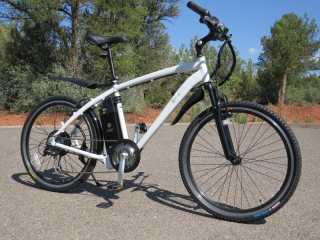
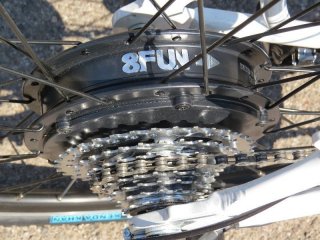
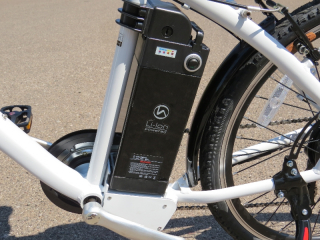
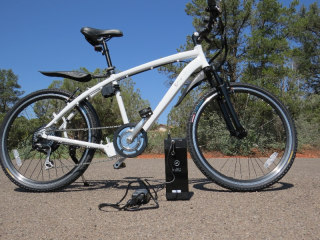

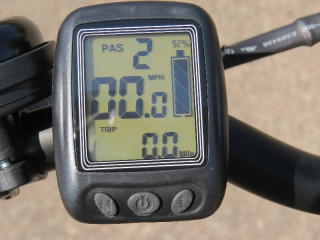
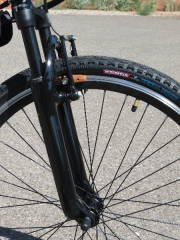
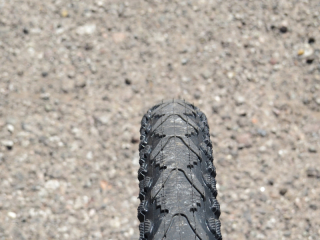
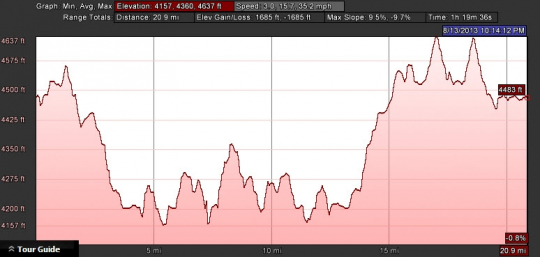



Pete, thanks for the interesting news that you present. Great job! It is an upcoming and progressive industry that I hope more entrepreneurs will run with. Thanks again for your work.
Hi Frank, thank you for your comment! Please let your family and friends know about e-bikes. More people need to know about them.